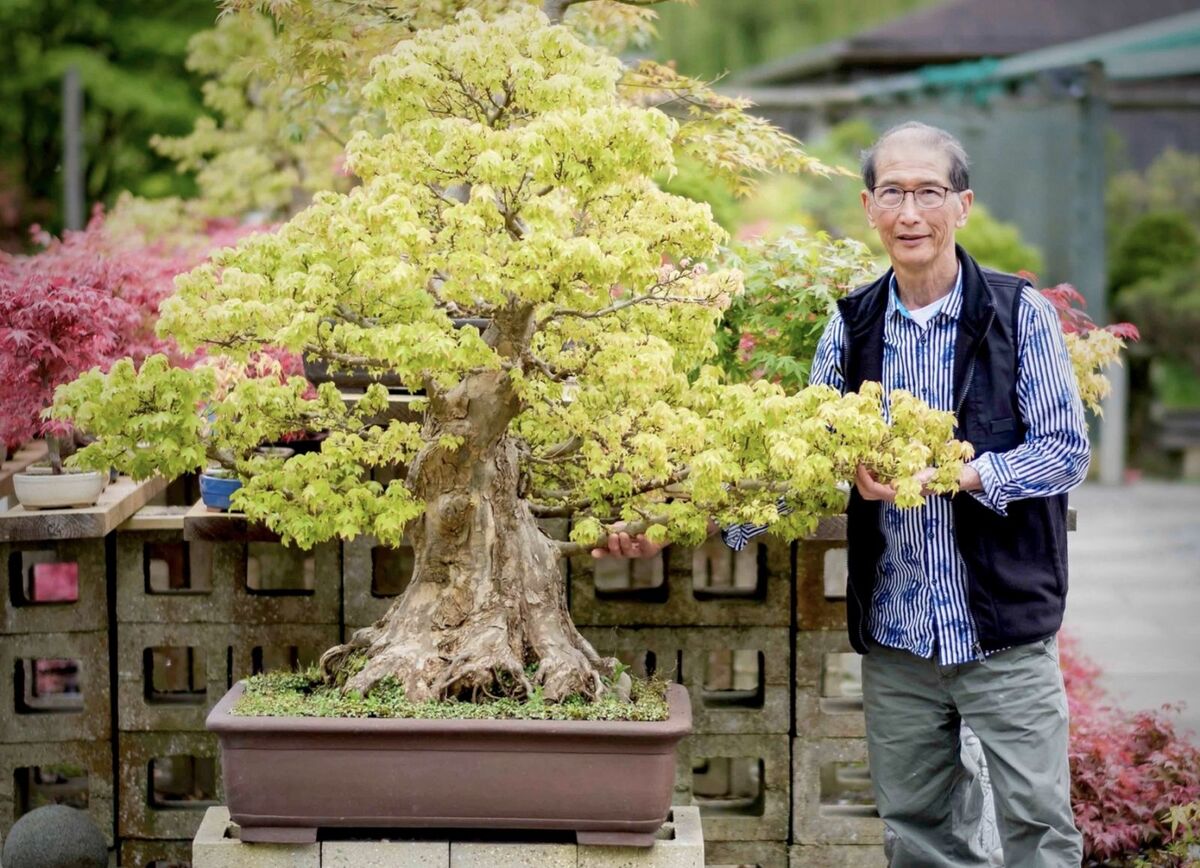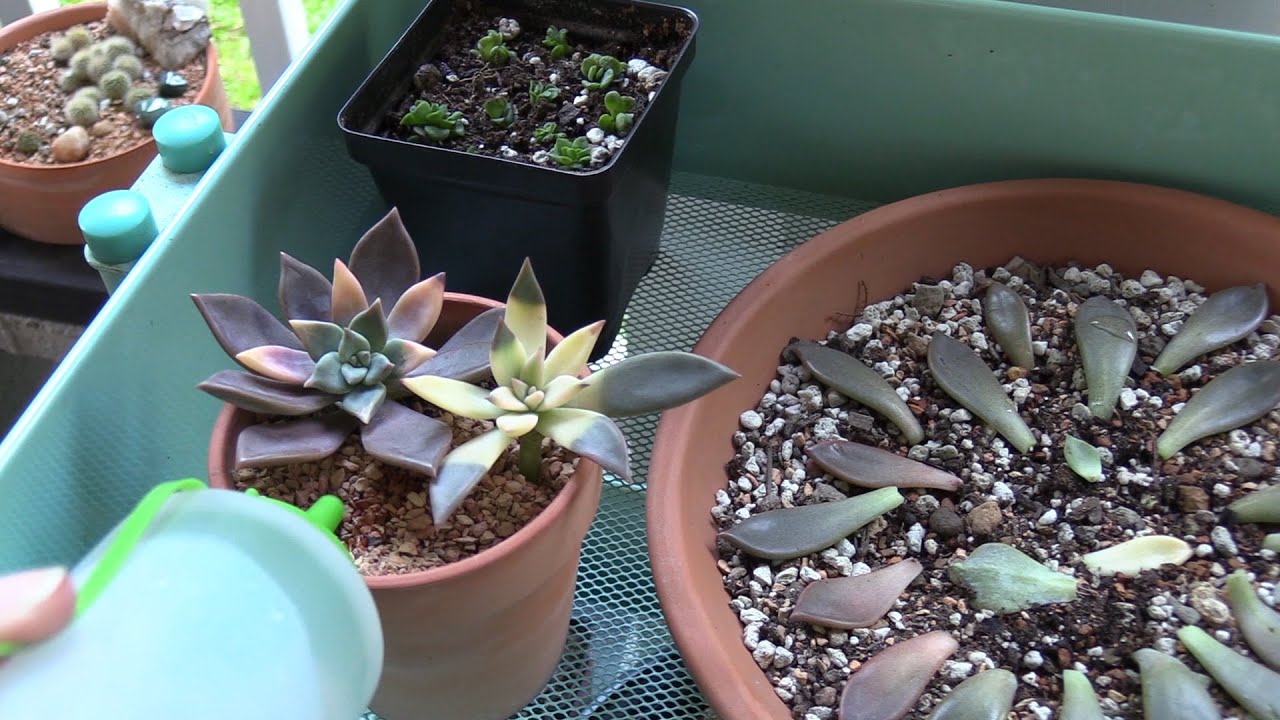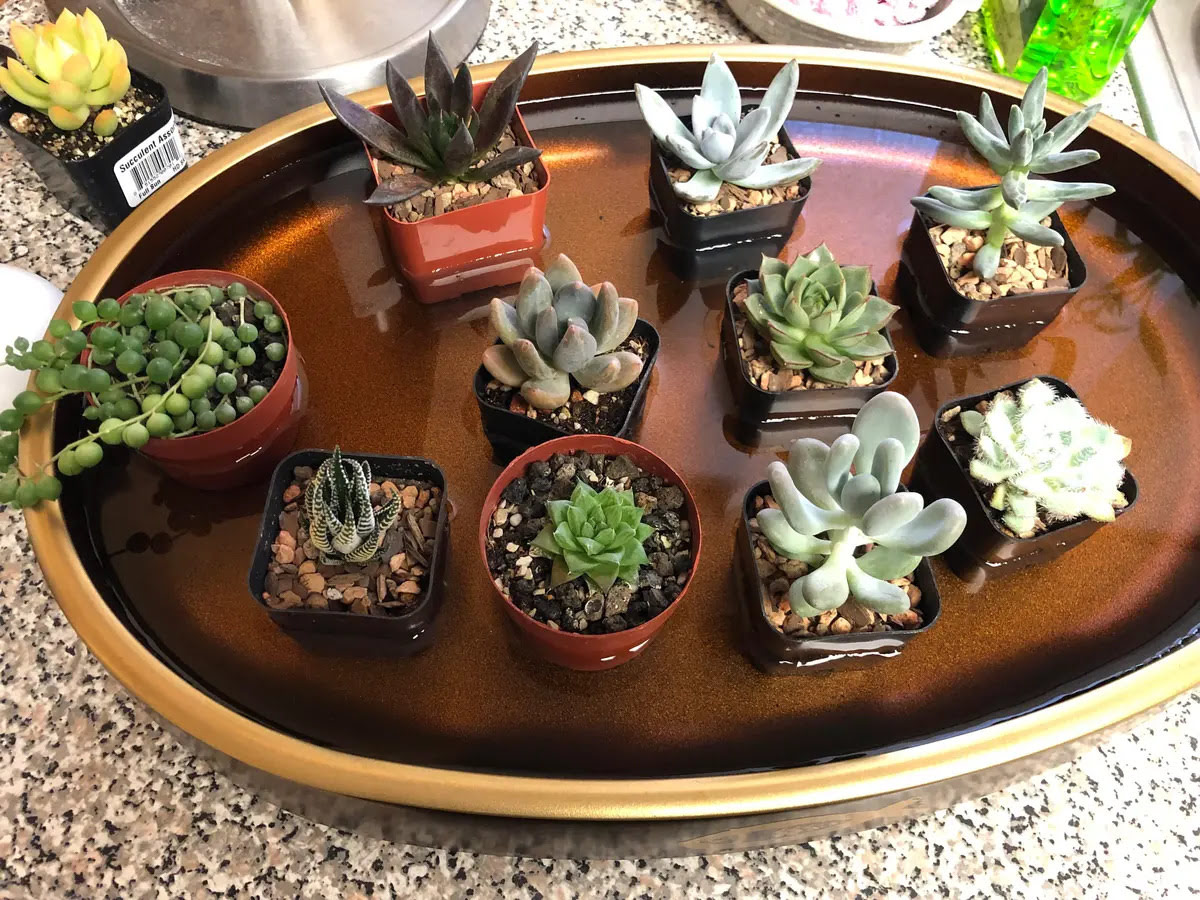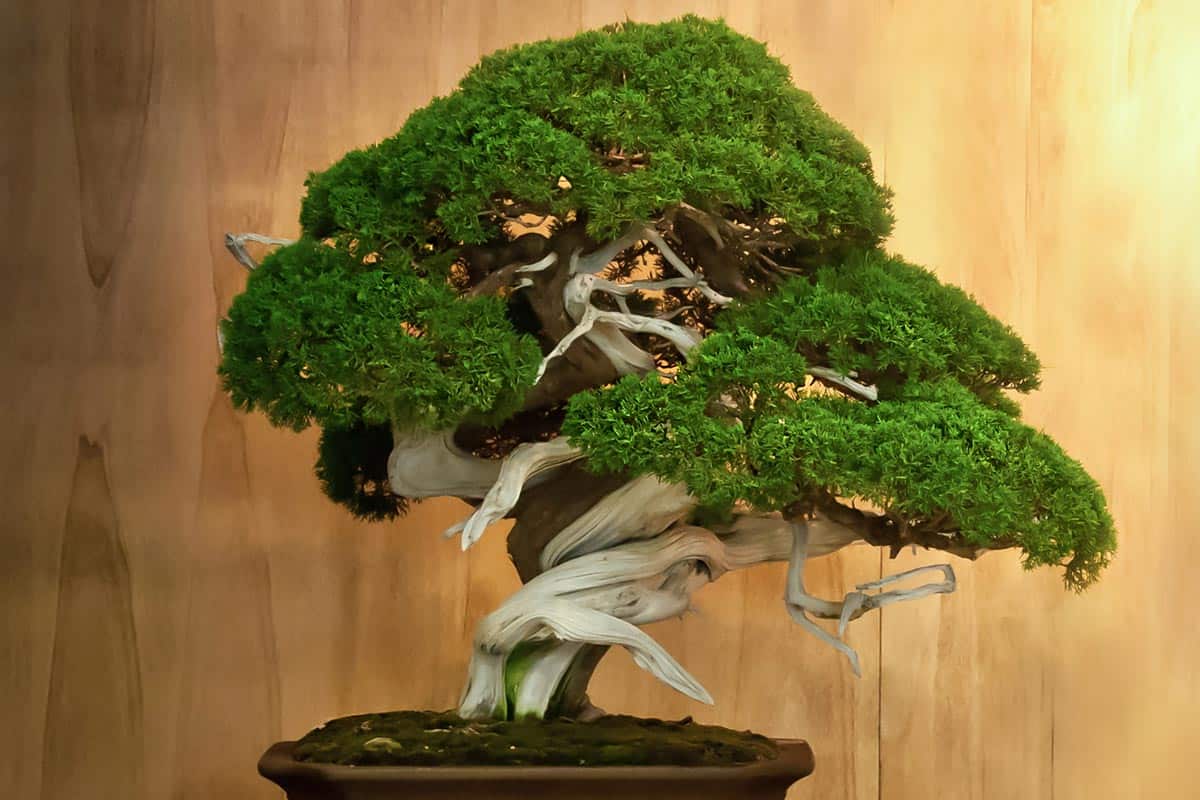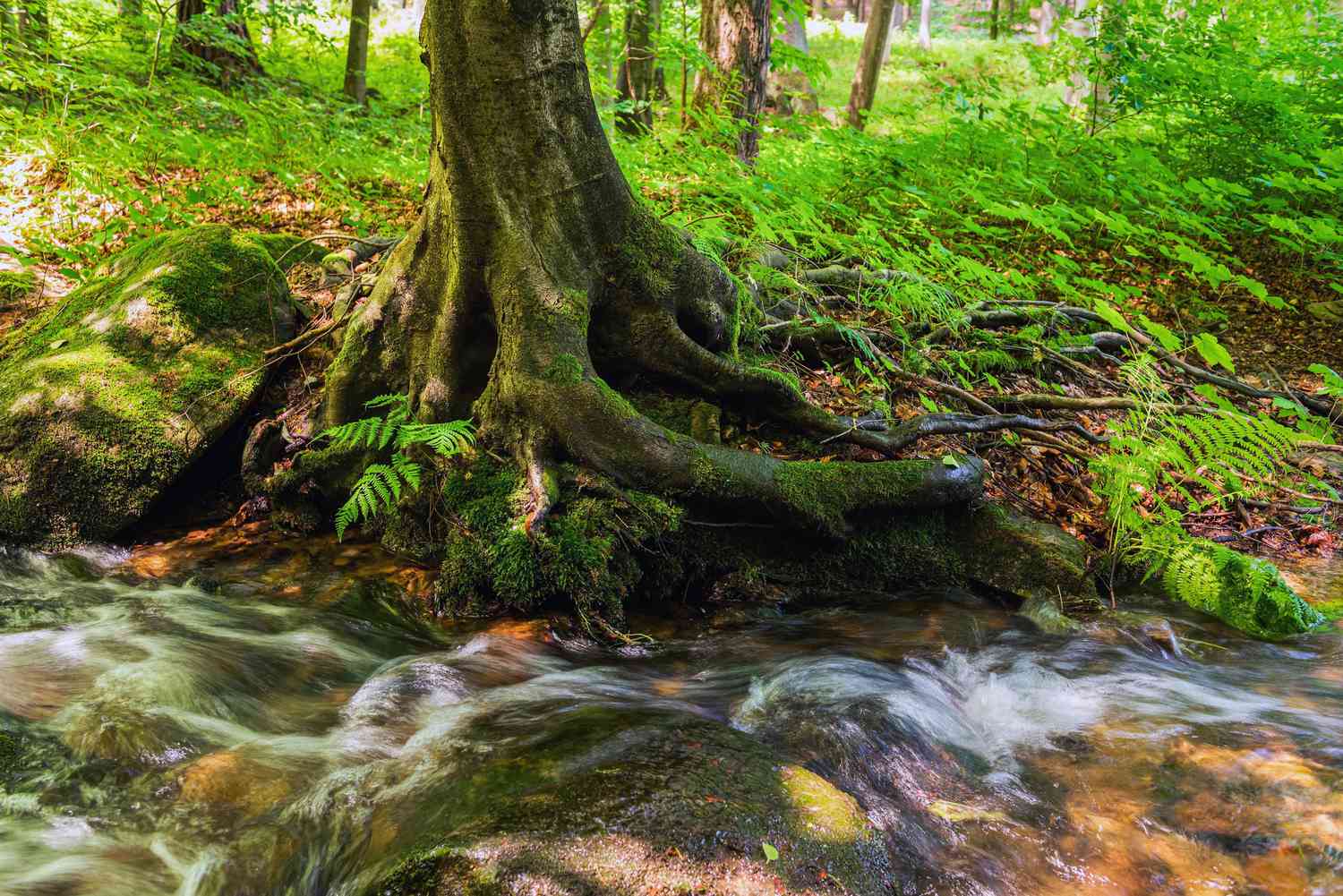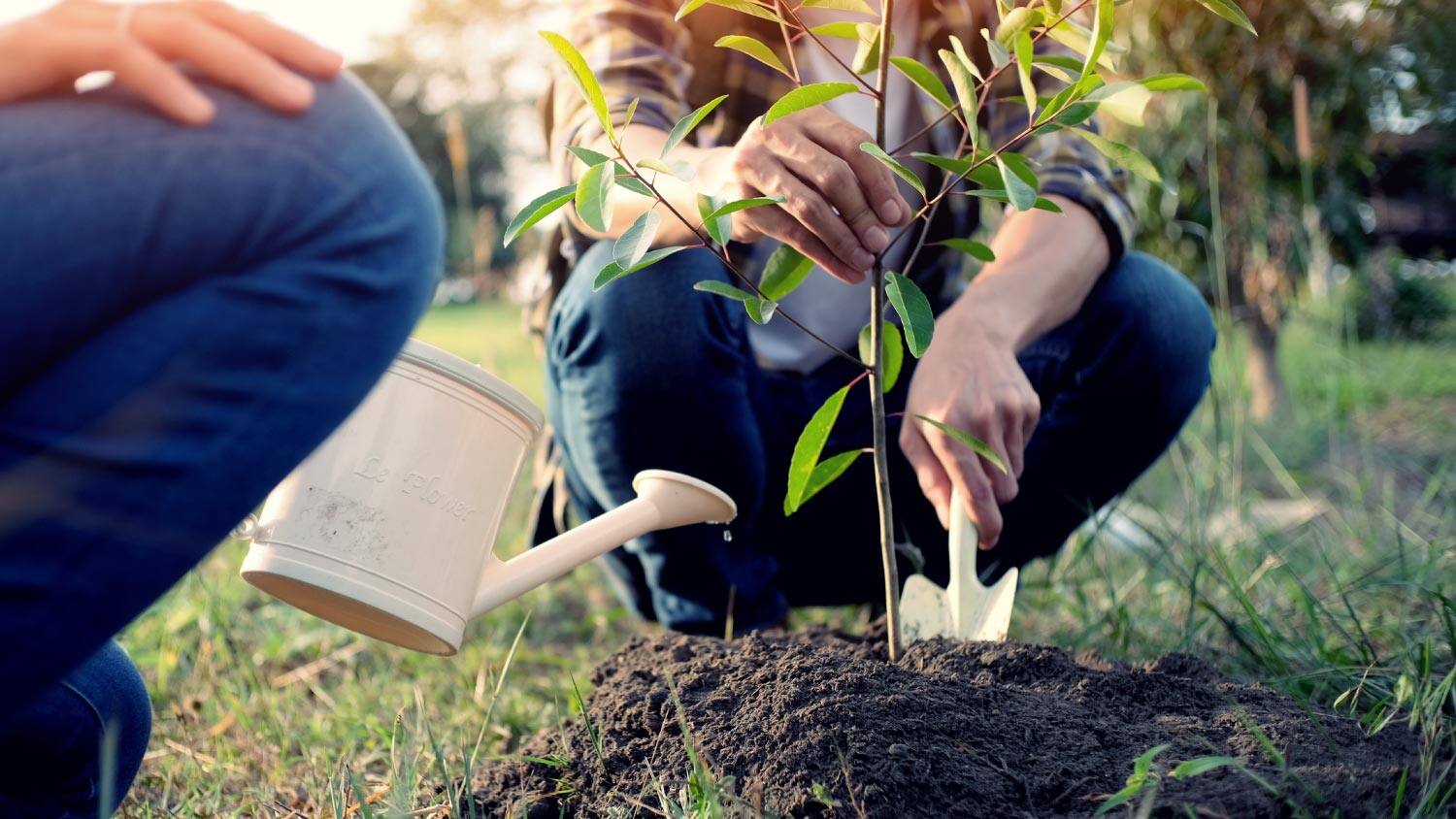Home>Gardening Techniques>Plant Care>How Do You Water Bonsai Trees


Plant Care
How Do You Water Bonsai Trees
Modified: February 9, 2024
Learn the best plant care practices for watering bonsai trees. Discover how to properly water your bonsai to keep it healthy and thriving.
(Many of the links in this article redirect to a specific reviewed product. Your purchase of these products through affiliate links helps to generate commission for Chicagolandgardening.com, at no extra cost. Learn more)
Table of Contents
- Introduction
- Choosing the Right Watering Technique for Bonsai Trees
- Understanding the Water Requirements of Bonsai Trees
- Factors to Consider When Watering Bonsai Trees
- Watering Techniques for Bonsai Trees
- Overwatering and Underwatering: Common Mistakes to Avoid
- Signs of Proper Watering for Bonsai Trees
- Best Practices for Watering Bonsai Trees
- Conclusion
Introduction
Welcome to the world of bonsai trees, where artistry meets horticulture. Bonsai, a Japanese term meaning “tray planting,” is the practice of growing miniature trees in containers that mimic the shape and scale of mature trees found in nature. As a bonsai enthusiast, you understand the delicate balance required to maintain these living works of art. One crucial aspect of caring for bonsai trees is watering.
Watering is an essential task in plant care, and bonsai trees are no exception. The watering process affects the overall health and vitality of the tree, as well as its ability to thrive in its miniature environment. In this article, we will delve into the ins and outs of watering bonsai trees, providing you with a comprehensive guide to ensure your trees receive the optimal amount of hydration.
Proper watering techniques for bonsai trees vary depending on various factors such as the type of tree, soil composition, container size, and even climate conditions. To become a skilled bonsai gardener, it is crucial to understand these factors and tailor your watering routine accordingly.
Overwatering and underwatering are two common mistakes that bonsai enthusiasts often encounter. Striking a balance between providing adequate moisture without drowning the roots can be challenging. However, with the right knowledge and techniques, you can navigate these challenges and keep your bonsai trees thriving.
In the following sections, we will explore the different aspects of watering bonsai trees, including the water requirements of bonsai trees, factors to consider, watering techniques, signs of proper watering, and best practices to follow. With this information, you will be better equipped to care for your bonsai trees and ensure their long-term health and beauty.
Choosing the Right Watering Technique for Bonsai Trees
Watering bonsai trees requires a delicate balance to provide the proper amount of moisture without overwatering or underwatering. This balance is crucial for the tree’s health and overall growth. When it comes to choosing the right watering technique for your bonsai trees, there are several factors to consider.
Firstly, it is essential to understand the specific water requirements of your bonsai tree species. Different types of bonsai trees have varying tolerance levels for moisture. Some species prefer consistently moist soil, while others require periods of slight dryness between watering. Research your specific bonsai tree type to determine its water needs.
The soil composition of your bonsai tree’s pot also plays a role in determining the appropriate watering technique. The soil should be well-draining, allowing excess water to escape freely. This is crucial to prevent the roots from becoming waterlogged, which can lead to root rot and other issues. Consider using a specialized bonsai soil mix or amending regular potting soil with materials such as perlite or pumice to improve drainage.
Container size is another factor to consider. Depending on the size of your bonsai tree and its root system, you may need to adjust your watering technique. Smaller containers tend to dry out more quickly, requiring more frequent watering, while larger containers retain moisture for longer periods. Observe the moisture level of the soil and adjust your watering schedule accordingly.
Climate conditions also impact the watering needs of bonsai trees. In hot and dry climates, trees may require more frequent watering to compensate for increased evaporation. Conversely, in cooler and more humid climates, trees may require less frequent watering. Monitor the weather and adapt your watering routine to suit the environmental conditions.
Finally, it is beneficial to consider the season when determining your watering technique for bonsai trees. During the active growing season in spring and summer, your tree will require more water to support its growth. In contrast, during the dormant period in fall and winter, the tree’s water requirements decrease. Adjust your watering frequency accordingly to avoid overwatering or underwatering.
By taking into account these factors – the water requirements of your bonsai tree species, the soil composition, container size, climate conditions, and the season – you can choose the right watering technique for your bonsai trees. This will help maintain the ideal moisture level and promote the overall health and vitality of your trees.
Understanding the Water Requirements of Bonsai Trees
Understanding the water requirements of bonsai trees is essential for successful cultivation. Just like any other plant, bonsai trees need water to survive and thrive. However, different species and environmental factors can influence their water needs. Let’s take a closer look at the factors that affect the water requirements of bonsai trees.
The first factor to consider is the type of bonsai tree you are caring for. Some species, like the Juniper and Pine, prefer drier conditions and can tolerate slight dryness between watering. On the other hand, species like the Elm and Maple thrive in consistently moist soil. Research the specific water preferences of your bonsai tree species to ensure you are meeting its needs.
Another factor that affects water requirements is the size and age of the bonsai tree. Younger trees with smaller root systems require less water compared to mature trees. As the tree grows and develops a more extensive root system, its water demands will increase. It is important to adjust your watering routine accordingly as your bonsai tree matures.
The climate in which you are growing your bonsai trees also plays a significant role in determining water requirements. In hot and dry climates, bonsai trees may require more frequent watering to prevent drying out. Conversely, in cooler and more humid climates, trees may require less water as the soil retains moisture for more extended periods. Monitoring weather conditions can help you determine when to water your bonsai trees.
The soil composition and potting mix used for bonsai trees also impact their water requirements. Well-draining soil allows excess water to escape, preventing waterlogged roots. A good bonsai soil mix should consist of a combination of organic and inorganic materials, such as akadama, pumice, and lava rock, to provide adequate drainage while retaining some moisture.
Lastly, it is crucial to consider the season when determining the water needs of your bonsai trees. During the active growing season in spring and summer, when the trees are producing new foliage and branches, they require more water. In contrast, during the winter dormancy period, when growth slows down, water requirements decrease. Adjust your watering frequency and amount accordingly to avoid overwatering or underwatering.
By understanding these factors and tailoring your watering routine to meet the specific water requirements of your bonsai trees, you can provide them with the optimal conditions for growth and health. Regular observation and thoughtful adjustments to your watering regimen will ensure your bonsai trees thrive for years to come.
Factors to Consider When Watering Bonsai Trees
When it comes to watering bonsai trees, several factors must be considered to ensure the health and vitality of these miniature wonders. By taking these factors into account, you can establish an effective watering routine that meets the specific needs of your bonsai trees. Here are some key factors to consider:
Type of Bonsai Tree: The species of your bonsai tree plays a significant role in determining its water requirements. Different species have varying tolerance levels for moisture. Some bonsai trees thrive in consistently moist soil, while others prefer slightly drier conditions. Research the specific water needs of your bonsai tree species to ensure you provide the right amount of water.
Soil Composition: The soil composition of your bonsai tree’s pot is crucial for proper water drainage. Bonsai soil should be well-draining to prevent waterlogging and root rot. It should strike a balance between retaining enough moisture for the tree’s water needs and allowing excess water to escape. A good bonsai soil mix often includes materials like akadama, volcanic rock, and organic components like peat or compost.
Pot Size and Material: The size and material of the pot also affect watering requirements. Smaller pots, such as mame-sized bonsai pots, dry out more quickly and may require more frequent watering. Larger pots retain moisture for a more extended period and may need less frequent watering. Additionally, the material of the pot can impact water evaporation; unglazed clay pots tend to allow more airflow and evaporation compared to plastic or glazed pots.
Climate Conditions: Climate plays a significant role in watering needs. In hot and dry climates, bonsai trees may require more frequent watering to prevent dehydration. In humid climates, watering needs may be lower as the air naturally contains more moisture. Monitor weather conditions, temperature, and humidity levels to adjust your watering schedule accordingly.
Tree Age and Growth Stage: The age and growth stage of your bonsai tree also affect watering requirements. Younger trees and newly planted bonsai may have less developed root systems and require less water. As the tree matures and develops a more extensive root network, watering needs will increase. Adjust your watering routine as your bonsai tree grows and progresses through different growth stages.
The Season: The season plays a crucial role in bonsai tree care, including watering. During the active growing season in spring and summer, bonsai trees typically require more water to support foliage and branch development. In contrast, during the colder months or dormant period in fall and winter, the watering frequency may decrease as the tree’s growth slows down. Adapt your watering routine to match the seasonal changes.
By carefully considering these factors when watering your bonsai trees, you can provide them with the right amount of water to promote healthy growth and longevity. Regular observation, adjustments to environmental conditions, and a keen eye for the specific needs of your bonsai tree species will ensure their overall well-being.
Watering Techniques for Bonsai Trees
The art of watering bonsai trees requires finesse and attention to detail. Using proper watering techniques ensures that your bonsai trees receive the optimal amount of moisture to thrive. Here are some effective techniques to consider when watering your bonsai trees:
Top Watering: This is the most common and straightforward method of watering bonsai trees. It involves pouring water evenly over the soil surface until it starts to drain through the drainage holes at the bottom of the pot. This technique allows water to reach the roots from above, simulating natural rainfall. You can use a watering can with a narrow spout or a hose with a gentle spray attachment for precise and controlled watering.
Submersion Soaking: Submersion soaking involves immersing the entire bonsai pot in a container filled with water. Place the pot in the water, ensuring that it is fully submerged, and leave it for a few minutes or until bubbles stop rising to the surface. This technique allows water to penetrate the soil from all angles, thoroughly hydrating the roots. Submersion soaking is particularly useful if the soil has become dry and compacted.
Bottom Watering: In this technique, water is added to a tray or saucer on which the bonsai pot sits. The water is absorbed through the drainage holes at the bottom of the pot, allowing the roots to draw in moisture as needed. Bottom watering is effective when you want to avoid wetting the foliage or if the soil surface is covered with decorative elements like moss.
Misting: Misting is a supplementary technique that involves spraying a fine mist of water over the foliage and branches of the bonsai tree. This helps increase humidity levels around the leaves, which can be beneficial, especially in drier environments or during hot summer months. Misting should be done in moderation to prevent excessive moisture accumulation on the leaves, which can lead to fungal diseases.
Moisture Meter: Using a moisture meter can be a helpful tool for monitoring the moisture level of the soil. Insert the probe into the soil at different locations and depths to get an accurate reading. This allows you to determine if the soil is too dry or too wet and helps you make informed decisions about when and how much to water your bonsai trees.
When applying any of these watering techniques, it is important to remember that the goal is to achieve a balance between providing enough water for the tree’s needs without oversaturating the roots. Avoid watering on a predetermined schedule and instead monitor the soil’s moisture level through touch and visual cues. Factors such as the species, season, climate, and specific conditions of your bonsai tree will influence the frequency and amount of water required.
Ultimately, mastering the art of watering bonsai trees comes with experience and understanding the unique needs of your trees. Pay attention to your bonsai’s responses to different watering techniques and adjust your approach accordingly. With time and practice, you will develop a watering routine that helps your bonsai trees flourish.
Overwatering and Underwatering: Common Mistakes to Avoid
When it comes to watering bonsai trees, finding the right balance is crucial. Both overwatering and underwatering can have detrimental effects on the health and vitality of your bonsai trees. Understanding the risks associated with these common mistakes will help you avoid them and maintain optimal moisture levels for your trees.
Overwatering: One of the most common mistakes made by bonsai enthusiasts is overwatering. Overwatering occurs when the roots are constantly exposed to excessive moisture, leading to root rot and other root-related issues. Symptoms of overwatering include yellowing or wilting leaves, a foul odor emanating from the soil, and mushy or discolored roots.
To prevent overwatering, it is essential to practice moderation when watering your bonsai trees. Avoid watering on a strict schedule and instead rely on visual and tactile cues to determine when your tree needs water. Check the soil moisture level by sticking your finger about an inch into the soil. If it feels damp, hold off on watering until the soil begins to dry out slightly.
Underwatering: Conversely, underwatering can spell disaster for your bonsai trees. When a bonsai tree doesn’t receive enough water, it can lead to dehydration, causing the leaves to wilt, turn yellow, or drop off prematurely. The soil may become dry and compacted, making it difficult for the roots to absorb water and nutrients.
To avoid underwatering, pay close attention to the moisture needs of your bonsai trees. Check the soil regularly and water when you observe signs of dryness. It’s important to provide enough water to thoroughly hydrate the soil, allowing it to reach the roots. However, avoid excessive watering that could result in waterlogged soil.
Monitoring and Adjusting: The key to preventing both overwatering and underwatering is careful observation and adjustment. Each bonsai tree is unique, and its water needs can vary depending on factors such as species, age, climate, and environmental conditions. Take the time to learn about the specific water requirements of each tree species in your care.
Observe the health and behavior of your bonsai trees regularly. Pay attention to the appearance of the leaves, the overall color of the foliage, and the condition of the soil. Adjust your watering routine accordingly, offering more or less water as needed. Remember that it’s always better to slightly underwater than to overwater, as underwatering is generally less harmful and can be corrected more easily.
By avoiding the common mistakes of overwatering and underwatering, you can create a healthy and conducive environment for your bonsai trees to thrive. Establishing a balanced watering routine that meets the specific needs of each tree will contribute to their long-term growth and overall beauty.
Signs of Proper Watering for Bonsai Trees
Proper watering is essential for the health and vitality of bonsai trees. When done correctly, it helps ensure that the trees receive the right amount of moisture to support their growth and development. There are several signs you can look for to determine if your bonsai trees are being watered properly.
Foliage Appearance: The leaves of a properly watered bonsai tree should be vibrant and lush, with a healthy, glossy appearance. They should not appear wilted, yellowed, or dry. Over time, you will become familiar with the normal appearance of your bonsai tree’s foliage, and any sudden changes can indicate improper watering.
Soil Moisture Level: Another sign of proper watering is maintaining an appropriate soil moisture level. The soil should be consistently moist, but not waterlogged. When you touch the soil with your finger, it should feel slightly damp but not overly wet. If the soil feels dry, it may indicate that the tree needs to be watered. However, if it feels excessively wet, it may mean that you have been overwatering and need to adjust your watering routine.
Root Health: Proper watering contributes to the health of the bonsai tree’s root system. If the roots are healthy, they will be firm and white. On the other hand, if the roots are mushy, discolored, or emit a foul odor, it may be a sign of overwatering or root rot. Regularly inspecting the roots when repotting or during routine maintenance can help you gauge the effectiveness of your watering practices.
Seasonal Adjustments: Proper watering also involves making seasonal adjustments to meet the changing needs of bonsai trees. During the active growing seasons of spring and summer, the trees require more water to support their increased metabolic activity. In contrast, during the dormant period in fall and winter, the water needs decrease as the trees enter a period of rest. Adjust your watering frequency and amount accordingly to accommodate these seasonal changes.
Absence of Problems: Finally, one of the clearest signs of proper watering is the absence of problems such as leaf drop, yellowing leaves, or root-related issues. When bonsai trees receive the right amount of water, they can maintain their overall health and vigor. If you continually observe these problems, it may be an indication that you need to reassess your watering routine and make the appropriate adjustments.
Remember that each bonsai tree is unique, and its watering needs may vary based on its species, age, environmental conditions, and other factors. It is important to actively observe and respond to the specific requirements of your bonsai trees. Through time, experience, and careful attention, you will become more adept at recognizing the signs of proper watering, helping your bonsai trees thrive and flourish.
Best Practices for Watering Bonsai Trees
Watering bonsai trees correctly is key to their health and longevity. By following these best practices, you can ensure that your trees receive the appropriate amount of water for optimal growth and development.
Observe and Monitor: Regularly observe and monitor the moisture levels of the soil in your bonsai pots. Stick your finger about an inch into the soil to determine if it is dry or still moist. Establishing a watering routine based on visual and tactile cues will help avoid under or overwatering.
Water Thoroughly: When watering, aim to thoroughly saturate the soil. Pour water evenly over the soil surface until it starts to drain through the drainage holes at the bottom of the pot. This ensures that water reaches all parts of the root system, promoting healthy growth.
Avoid Standing Water: Standing water can lead to root rot and other root-related issues. Avoid allowing water to accumulate in saucers or trays beneath the bonsai pot. If excess water remains after watering, remove it to prevent waterlogging.
Adapt to Environment and Season: Adjust your watering routine to accommodate the changing needs of your bonsai trees. Hot and dry climates may require more frequent watering, while cooler and more humid climates may necessitate less frequent watering. Additionally, during the dormant period in fall and winter, reduce watering to reflect decreased metabolic activity.
Consider Species and Pot Size: Different bonsai tree species have different water requirements. Research the specific needs of your tree species and adjust your watering routine accordingly. Additionally, smaller pots dry out more quickly, so bonsai trees in smaller containers may require more frequent watering compared to those in larger pots.
Use Well-Draining Soil: Ensure that your bonsai trees are planted in a well-draining soil mix. Good bonsai soil consists of a combination of organic and inorganic materials, creating a balance between water retention and drainage. This helps prevent waterlogging, allowing the roots to access oxygen and reducing the risk of root rot.
Avoid Strict Schedules: Avoid watering on a rigid schedule, as the water needs of bonsai trees can vary. Instead, rely on the appearance and moisture level of the soil to determine when watering is necessary. Adjust your watering frequency based on the specific needs of your trees.
Consider Seasonal Temperature and Humidity: Temperature and humidity levels influence bonsai tree water requirements. Higher temperatures and drier conditions may necessitate more frequent watering, while cooler temperatures and higher humidity levels may require less watering. Stay attuned to the environmental conditions and adjust your watering routine accordingly.
Use Mulch: Applying a layer of organic mulch, such as moss or bark chips, around the base of your bonsai trees can help retain soil moisture. The mulch acts as an insulating barrier, preventing rapid evaporation and helping to maintain a consistent level of moisture in the soil.
Know Your Trees: Finally, becoming familiar with your bonsai trees and understanding their specific water needs is essential. Each tree is unique, and factors such as species, age, and growth stage can influence their water requirements. Regular observation, learning from experience, and being attentive to the individual needs of your trees will contribute to successful watering practices.
By following these best practices, you will develop a watering routine that ensures your bonsai trees receive the right amount of water for their health and growth. Remember that every tree is different, so adapt your approach as needed and consistently monitor the response of your trees to ensure their continued thriving.
Conclusion
Watering bonsai trees is a fundamental aspect of their care and plays a crucial role in their overall health and development. By understanding the water requirements of your bonsai trees, considering factors such as species, soil composition, pot size, climate, and season, you can establish an effective watering routine. By avoiding common mistakes such as overwatering and underwatering, and by recognizing the signs of proper watering, you can ensure that your bonsai trees thrive.
Remember, there is no one-size-fits-all approach when it comes to watering bonsai trees. Each tree is unique, and its water needs may vary. Regular observation, monitoring of moisture levels, and adjusting your watering routine accordingly are key. By practicing best watering practices, including thorough watering, adapting to the environment and season, and using well-draining soil, you can provide your bonsai trees with the optimal conditions for growth.
Watering bonsai trees is both an art and a science. It requires patience, knowledge, and attentiveness. As you gain experience and become more familiar with the specific needs of your bonsai trees, you will develop a deeper understanding of their individual requirements and be able to provide the care they need to flourish.
So, embrace the artistry of watering bonsai trees and enjoy the journey of tending to these miniature living works of art. With proper watering techniques and a keen eye for the specific needs of your trees, you can create an environment that supports their growth, enhances their beauty, and brings you joy and satisfaction as a caretaker of these amazing creations.
